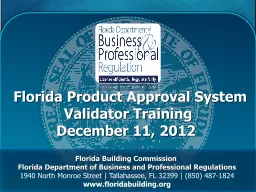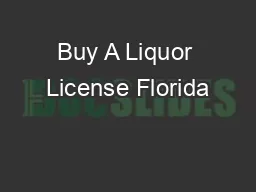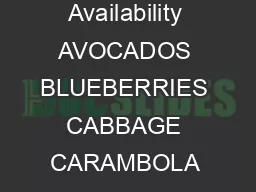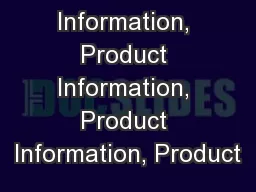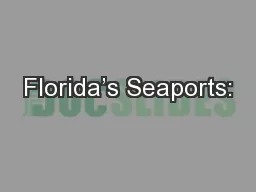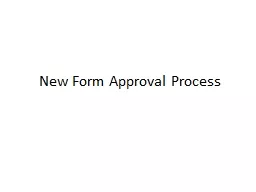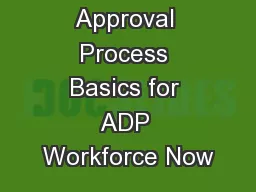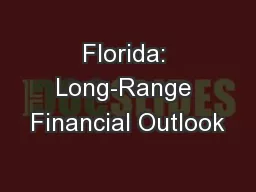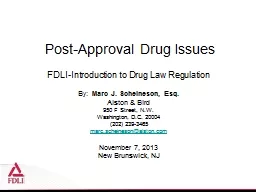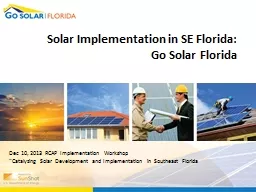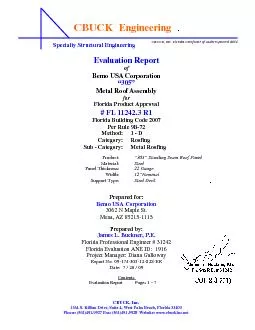PPT-Florida Product Approval System
Author : debby-jeon | Published Date : 2015-11-24
Validator Training December 11 2012 Florida Building Commission Florida Department of Business and Professional Regulations 1940 North Monroe Street Tallahassee
Presentation Embed Code
Download Presentation
Download Presentation The PPT/PDF document "Florida Product Approval System" is the property of its rightful owner. Permission is granted to download and print the materials on this website for personal, non-commercial use only, and to display it on your personal computer provided you do not modify the materials and that you retain all copyright notices contained in the materials. By downloading content from our website, you accept the terms of this agreement.
Florida Product Approval System: Transcript
Download Rules Of Document
"Florida Product Approval System"The content belongs to its owner. You may download and print it for personal use, without modification, and keep all copyright notices. By downloading, you agree to these terms.
Related Documents

